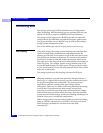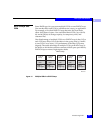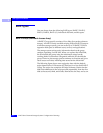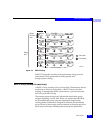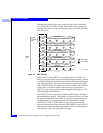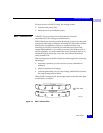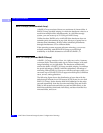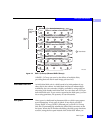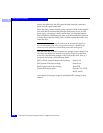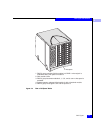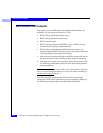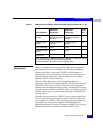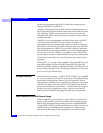
2
2-8
EMC Fibre Channel Storage-System Configuration Planning
RAID Types and Tradeoffs
RAID 0 Group (Nonredundant Array)
A RAID 0 Group consists of three to a maximum of sixteen disks. A
RAID 0 Group uses disk striping, in which the hardware writes to or
reads from multiple disks simultaneously. In a full-fibre storage
system, you can create up to 32 LUNs per RAID Group.
Unlike the other RAID levels, with RAID 0 the hardware does not
maintain parity information on any disk; this type of group has no
inherent data redundancy. RAID 0 offers enhanced performance
through simultaneous I/O to different disks.
If the operating system supports software mirroring, you can use
software mirroring with the RAID 0 Group to provide high
availability. A desirable alternative to RAID 0 is RAID 1/0.
RAID 1/0 Group (Mirrored RAID 0 Group)
A RAID 1/0 Group consists of four, six, eight, ten, twelve, fourteen,
or sixteen disks. These disks make up two mirror images, with each
image including two to eight disks. The hardware automatically
mirrors the disks. A RAID 1/0 Group uses disk striping. It combines
the speed advantage of RAID 0 with the redundancy advantage of
mirroring. With a RAID 1/0 Group on a full-fibre storage system, you
can create up to 32 RAID 5 LUNs to apportion disk space to different
users, servers, and applications.
The following figure shows the distribution of user data with the
default stripe element size of 128 sectors (65,536 bytes) in a six-disk
RAID 1/0 Group. Notice that the disk block addresses in the stripe
proceed sequentially from the first mirrored disks (first and fourth
disks) to the second mirrored disks (second and fifth disks), to the
third mirrored disks (third and sixth disks), and then from the first
mirrored disks, and so on.





